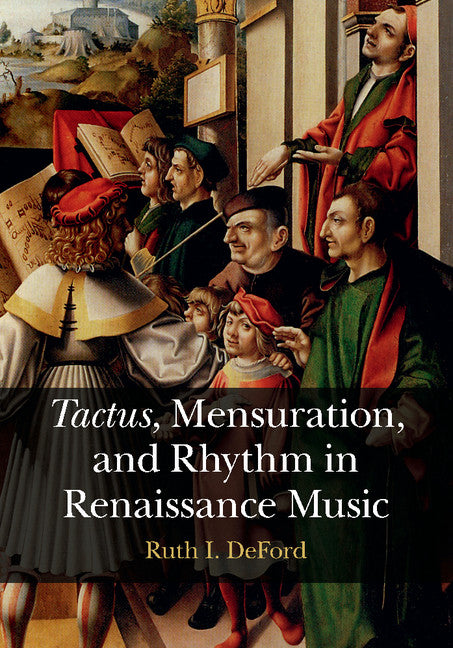Freshly Printed - allow 8 days lead
Couldn't load pickup availability
Tactus, Mensuration and Rhythm in Renaissance Music
Ruth I. DeFord offers new insights on Renaissance theories of rhythm and their application to the analysis and performance of music.
Ruth I. DeFord (Author)
9781107064720, Cambridge University Press
Hardback, published 23 April 2015
518 pages, 27 b/w illus. 14 tables 240 music examples
24.9 x 18.3 x 3 cm, 1.16 kg
'DeFord's study provides a thorough overview of the aspect of Renaissance music that is the most difficult for our modern ears and minds to understand: rhythm. While the introductory chapters would serve as an excellent introduction to Renaissance rhythm for upper-level undergraduates or graduate students, the general organization of DeFord's volume will make it useful for a variety of populations and purposes. The wealth of music examples included, many of which are transcribed by DeFord herself, is yet another strength of the book. Tactus, Mensuration, and Rhythm in Renaissance Music is an important contribution to Renaissance scholarship. Kimberly Hieb, Notes
Ruth I. DeFord's book explores how tactus, mensuration, and rhythm were employed to articulate form and shape in the period from c.1420 to c.1600. Divided into two parts, the book examines the theory and practice of rhythm in relation to each other to offer new interpretations of the writings of Renaissance music theorists. In the first part, DeFord presents the theoretical evidence, introduces the manuscript sources and explains the contradictions and ambiguities in tactus theory. The second part uses theory to analyse some of the best known repertories of Renaissance music, including works by Du Fay, Ockeghem, Busnoys, Josquin, Isaac, Palestrina, and Rore, and to shed light on composers' formal and expressive uses of rhythm. DeFord's conclusions have important implications for our understanding of rhythm and for the analysis, editing, and performance of music during the Renaissance period.
Introduction
Part I. Theory: 1. Sources of information
2. Principles of mensural notation
3. Definitions and descriptions of Tactus
4. Tactus and rhythm
5. Tactus and signs in fifteenth-century music theory
6. Tactus and signs in sixteenth-century music theory
7. Tactus and tempo
Part II. Practice: 8. The songs of Du Fay
9. The L'homme armé masses of Ockeghem, Busnoys, and Josquin
10. The five- and six-voice motets of Josquin
11. The Choralis Constantinus of Isaac
12. The masses of Palestrina
13. The madrigals of Rore
14. Popular songs and dances
Conclusion.
Subject Areas: Techniques of music / music tutorials [AVS], Musical scores, lyrics & libretti [AVQ], Theory of music & musicology [AVA], Music [AV]


